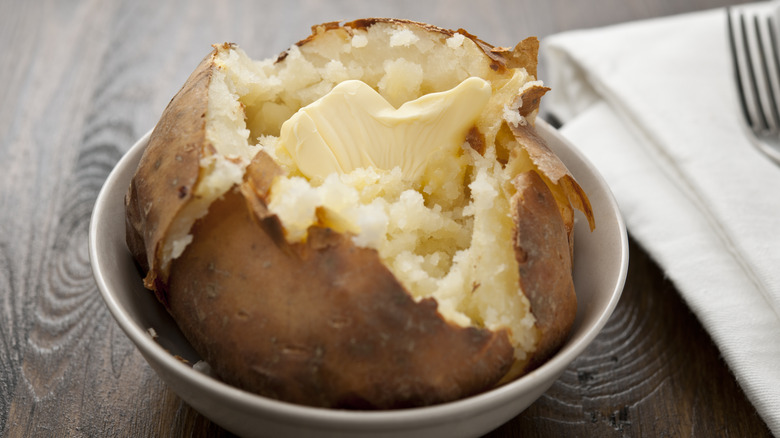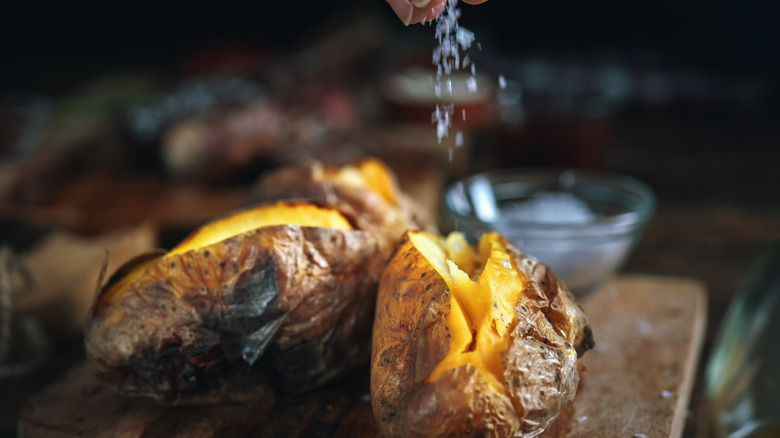The Reason Restaurant Baked Potatoes Always Taste Better Than Yours
If you're envisioning the most traditional all-American dinner you can imagine, it almost definitely includes potatoes — likely a baked potato. And across many cuisines, the humble baked spud plays a starring role. The workhorses of the starches, potatoes are incredibly versatile, filling, inexpensive, accessible, and delicious. And you might think the classic baked potato takes very little skill, but the truth is, there's a little more art involved in making one that would pass for a side served in the finest restaurant.
If you've ever noticed that your at-home side never quite measures up to the ones you'd be served dining out, there are a few key reasons for that. And luckily, you don't need any special culinary training to replicate the tactics that make them so good in your favorite sit-down restaurant. There's more than one tip to the perfect potato — all sorts of factors like the type of potato, the baking time and temp, the way you prep them, and the ingredients and flavoring you use all make or break it. But the biggest difference between yours and a chef's is likely the way you bake it — which should never include aluminum foil, but should lean heavily on a source of fat — oil or butter. If crispy outsides and a creamy interior are what you're after — and it is — tweaking these two steps makes all the difference.
Skip the foil, but never skimp on the fat
Much of what separates a passable baked potato from a phenomenal one is the texture — which should always be fluffy, creamy, airy on the inside, crisp (but not burnt), and golden brown on the outside. You'd expect as much from a restaurant-made one. Gummy, dense interiors and burnt or overly wrinkly skins are common pitfalls, but easy enough to avoid if you prep yours the way a chef would. Meaning, you're skipping the microwave, and losing the aluminum foil in the oven as well.
Wrapping your russet or Yukon Gold in foil essentially holds the steamy heat inside the wrapper, so your potato steams but doesn't develop that nice golden brown crispy crackly exterior you're after. Instead, generously coat the outside with ample oil, a vital tip to achieving that restaurant taste and texture. You could also save some money here on your premium olive oil, and use canola or vegetable oil. Of course, once you have your perfectly prepared tater, what you do after that is up to you, and open for interpretation. Keep it classic with butter and salt, or go wild with inventive toppings. You could even turn it into a whole, protein-heavy meal as the Brits would, piling a hot dog on top, for a Bonfire night-inspired meal.

